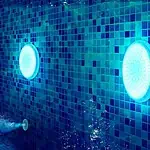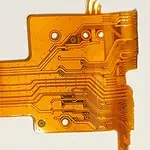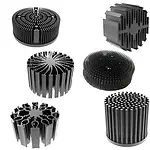Durability is an important question when purchasing any electrical device. And the reliability of any product directly or indirectly depends on its IK ratings. So, checking the IK rating is essential whenever you buy any electrical appliance.
IK rating determines a product’s degree of protection against any impact. Any indoor or outdoor enclosure can go through unexpected happenings, like getting hit or falling from a height. And to ensure the device remains damage free after such an incident knowing the IK rating is crucial. It is graded in different levels, and each rating indicates a specific resistance limit.
This article will provide a complete guideline about IK rating, its uses, benefits, and how to determine it. You will further get suggestions about getting the ideal IK ratings for different types of the light fixture. So, without further delay, let’s get into the discussion-
What Is IK Rating?
Impact Protection (IK) rating indicates the degree of protection of an electrical enclosure against any mechanical impact.
The European standard BS EN 50102 first defined IK Ratings in 1995. It was later amended in 1997 with IEC 60068-2-75. After that, in 2002, the European Standard EN62262 was issued as equivalent to the International Standard IEC 62262.
Before the IK rating was standardized, manufacturers used an additional number with the ingress progress (IP rating) to indicate the resistance to impact. This extra number was added in brackets as anti-impact code. For example- IP66(9). But using such nonstandard numbering was very confusing as there wasn’t any official rating system. So, to solve this confusion, the IK rating was issued in 1995.
IK rating is a crucial factor for every electrical enclosure. It indicates how many impacts should be made to a device or what atmospheric condition it can tolerate. It even describes the hammer’s size, dimension, and material used to create impact.
So, in simple words, the IK rating determines the ability of an enclosure to withstand sudden or intense force or shock.
What Do IK Rating Numbers Mean?
Each number used in the IK rating has a particular meaning. The rating is graded from 00 to 10. And these numbers indicate the degree of protection from any external impact. So, the higher the grade, the better impact protection it provides. For example, a LED light with IK08 gives better protection than one with IK05.
IK Rating Chart
With the IK rating, you can determine the resistance level of any electrical enclosure. The protection level of different IK ratings and their impact are as follows-
| IK Rating | Protection | Impact |
| IK00 | Not Protected | – |
| IK01 | Protected against 0.14 joules impact | Equivalent to 0.25 kg of mass falling from 56 mm above the impacted surface |
| IK02 | Protected against 0.2 joules impact | Equivalent to 0.25 kg of mass falling from 80 mm above the impacted surface |
| IK03 | Protected against 0.35 joules impact | Equivalent to 0.25 kg of mass falling from 140 mm above the impacted surface |
| IK04 | Protected against 0.5 joules impact | Equivalent to 0.25 kg of mass lowering from 200 mm above the impacted surface |
| IK05 | Protected against 0.7 joules impact | Equivalent to 0.25 kg of mass falling from 280 mm above the impacted surface |
| IK06 | Protected against 1 joules impact | Equivalent to 0.25 kg of mass falling from 400 mm above the impacted surface |
| IK07 | Protected against 2 joules impact | Equivalent to 0.50 kg of mass lowering from 56 mm above the impacted surface |
| IK08 | Protected against 5 joules impact | Equivalent to 1.70 kg of mass falling from 300 mm above the impacted surface |
| IK09 | Protected against 10 joules impact | Equivalent to 5 kg of mass lowering from 200 mm above the impacted surface |
| IK10 | Protected against 20 joules impact | Equivalent to 5 kg of mass falling from 400 mm above the impacted surface |
Impact Test Characteristics
IK rating impact test considers the impact energy in joule, the radius of the striking element, the material of the impact, and its mass. The test also includes the height of free fall and three types of striking hammer tests, i.e., the pendulum hammer, spring hammer, and free fall hammer.
| IK code | IK00 | IK01-IK05 | IK06 | IK07 | IK08 | IK09 | IK10 |
| Impact Energy (Joules) | * | <1 | 1 | 2 | 5 | 10 | 20 |
| Radius of striking element (Rmm) | * | 10 | 10 | 25 | 25 | 50 | 50 |
| Material | * | Polyamide 1 | Polyamide 1 | Steel 2 | Steel 2 | Steel 2 | Steel 2 |
| Mass (KG) | * | 0.2 | 0.5 | 0.5 | 1.7 | 5 | 5 |
| Free Fall Height (M) | * | * | * | 0.40 | 0.30 | 0.20 | 0.40 |
| Pendulum hammer | * | Yes | Yes | Yes | Yes | Yes | Yes |
| Spring hammer | * | Yes | Yes | Yes | No | No | No |
| Free fall hammer | * | No | No | Yes | Yes | Yes | Yes |
From these charts; you can see that IK10 gives the highest level of protection. And it can resist an impact of 5 kg, creating an energy of 20 joules.

Factors For IK Rate Testing
When conducting an IK rating test for any electrical enclosure, you should know some factors. These are mentioned below-
Impact Energy
Thre impact energy for IK testing means the power needed to fracture an enclosure under standard conditions. It is measured in joule (J). For example- a LED neon flex with an IK08 rating can withstand an impact energy of 5 joules. That is, if an object of 1.70 kg of mass falling from 300 mm height strikes the neon flex, it will stay protected.
Material Of The Impact
The impact material is essential in the IK rating test. For testing IK01 to IK06, Polyamide 1 is used as the impact material. And steel is used for testing IK07 to IK10. So, as steel is much more robust than Polyamide 1, the products with IK07 to Ik10 ratings are more protected.
Height Of Fall
In testing the IK rating, the height of fall of the impact varies for different ratings. For example- for IK09 testing, the impact should be set at 0.20 meters to strike the test enclosure. Similarly, for IK10 testing, the free fall height is 0.40 meters. So, the testing enclosure should resist falling from a higher altitude to pass a higher IK rating.
Mass Of The Impact
The mass of impact for testing also varies with the IK rating. For example- to test whether a light fixture is IK07 rated, it should resist the strike of an impact with 0.5kg mass. And thus, the impact mass will increase with the increase of IK ratings.
Type Of Hammer Test
IK rating testing involves three types of hammer testing- spring hammer, pendulum hammer, and free fall hammer. A brief discussion about these types is as follows-
- Spring Hammer Test
A Spring hammer test is conducted to test the resistance of regular interference. This hammer testing applies for IK01 to IK07 ratings.
- Pendulum Hammer Test
The pendulum hammer test is more intense than the spring hammer test. It applies to all IK ratings. Even IK10 ratings must pass a pendulum test to ensure better protection against impact.
- Free Fall Hammer Test
Free fall hammer testing is more robust than the spring and pendulum method. This test applies to higher IK rating tests ranging from IK07 to IK10.
Equivalent to IP Rating
The IK rating of an enclosure must be equivalent to the ingress progress (IP) rating. So, for example- if a light fixture passes IP66 and IK06, it should be labeled as the same. But if the same fixture somehow fulfills IK08 but maintains only IP54, it can’t be marked as IP66 and IK08. So, in this case, you should label the fixture as ‘IP66 and IK06’ or ‘IP54 and IK08’. However, check- IP Rating: The Definitive Guide to learn more about IP rating.
So, these are the factors you should consider while taking the IK rating test.
How To Test IK Rating?
IK rating test is carried out in a suitable environment with the ‘control dropping’ method. Here a certain amount of energy is applied to the enclosure to pass the test. However, there are two main elements in testing IK rating. These are-
- The distance between the sample enclosure and the hammer
- Weight of the hammer
A fixed weight is placed at a fixed height and angle above the enclosure to perform this standardized test. Then the weight is allowed to free fall/strike to create a specific impact energy. This procedure is repeated three times at the same spot. And To ensure solid impact protection, the weight is allowed to strike without bounces at several enclosure locations.
How To Improve IK Rating?
IK rating is an essential fact to consider for any electrical device. So, here are three ways in which you can improve the IK rating-
Material
The material of the enclosure plays a crucial role in passing the IK rating. So, choosing a material with better resistance against impact is essential. Yet, the three best materials for the enclosure are-
- Stainless Steel:
Though stainless steel is the most expensive material, it creates the best resistance against impact.
- Glass Reinforced Polyester:
Glass-reinforced polyester is another excellent material for an enclosure. It is firm and gives excellent impact resistance. But the drawback of this material is that it is prone to UV radiation and is non-recyclable.
- Polycarbonate:
Polycarbonate is the latest technical material to use on enclosures for improving IK ratings. It is a UV-resistant and non-corrosive material. Besides, polycarbonate is also recyclable.
Therefore, choosing these three materials in the enclosure can improve the IK ratings.
Thickness
Increasing the thickness of the enclosure material gives better protection against impact. Thus any electrical device with a thick enclosure can pass a higher IK rating test. Therefore, it will increase the durability of the product.
Shape
The shape of an enclosure can be impact resistant. Design the enclosure so that the impact energy deflects to a broader area. Then, when an object strikes the device, the energy will not get into a specific area; rather, it will spread into the surroundings. And such a shaping will not cause severe damage to the product.
In this case, round enclosures are the best option. Corners are the weakest point, so a round shape deflects the impact energy to a larger area. Thus, it provides better protection than any enclosure with sharp corners.
Thus, following these key points, you can improve the IK rating of electric enclosures.
Where Are IK-Rated Products Used?
Ik-rated products are used where there is a higher risk of external exposure or damage. The electrical devices that face adverse atmospheric conditions and have a chance of more significant impact have a high IK rating. The places where IK-rated products are mainly used are-
- Industrial areas
- High traffic areas
- Public access areas
- Prisons
- Schools, etc.
IK Ratings For LED Lighting
For LED lights, the IK rating indicates whether the internal circuit of the light is dropped or affected by any mechanical impact. It also determines if the light will still work when going through any damage. In the lighting industry, IK ratings of luminaries are crucial, especially for outdoor lighting. That is because outdoor lights face harsh environmental conditions that can damage the lamps. And so, it is necessary to check whether the protection level of the light meets industry or national requirements. That is why the IK rating is vital when purchasing flood lights, street lights, stadium lights, and some special outdoor lights. Here are some suitable IK ratings for different types of outdoor lighting-
So, when installing any fixture outdoors, always check the IK ratings. And for better protection, always go for a higher IK rating, especially for industrial lighting.
IK Rating: Hammer Test For LED Lights
The IK rating of lights is rated from IK01 to IK10. And for LED lights, hammer testing to determine the IK rating is divided into two groups. The first group includes IK01 to IK06, which falls under the spring impact hammer test. And IK07 to IK10 comprise the second group that passes through the pendulum test. Details description of these two light hammer tests are as follows-
1st Group: Spring Impact Hammer Test (IK01 to IK06)
Spring impact hammer test of lighting is done to examine whether it can resist regular encounters. This spring hammer has a cone-shaped structure with a spring locking mechanism. When the cone end is pressed, the compressed spring from the other end hits the fixture under test. And repeating this procedure, the spring impact hammer testing of light is conducted.
The spring hammer test is done for rating IP01 to IK06. This group of ratings is suitable for indoor lighting and has relatively small energy (from 0.14J to 1J). So, indoor lighting like- downlight, high bay light, etc., undergoes spring hammer impact test.
2nd Group: Pendulum Test (IK07 to IK10)
The pendulum test is a high-strain test to determine the maximum protection of an electrical enclosure or light fixture. In this test, a fixed weight is attached to a pendulum that strikes the light fixture at a definite height. And this test is done for IK07 to IK10 rating, requiring more significant test energy (ranging from 2J to 20J). The pendulum test is used in the IK rating taste of street lights, stadium lights, explosion-proof lights, etc.
Cautions For Light IK Rating Test
While testing the IK rating of light fixtures, you should keep some facts in mind. These are-
- The test should be carried out at the necessary air pressure and temperature. According to IEC 62262, in testing IK ratings of light, the suggested temperature ranges from 150C to 350C, and the range for air pressure is 86 kPa-106 kPa.
- When carrying out the testing, apply impact to the entire enclosure. Doing so will ensure proper protection of the light fixture.
- The test must be carried out with the lights completely assembled and installed. Thus, the final product will go through testing and ensure accurate IK ratings.
- There are no pretreatment requirements for testing samples, and the lamp shouldn’t be powered on during the test. If you power the fixture while IK testing, there is a possibility of an accident. So, be careful with electrical contact and unplug the lights while testing.
- If the luminaire’s installation may impact the test results, you should conduct the test at the luminaire’s installation location.
- If the impact test is impossible due to the luminaire’s structure, a unique luminaire can be used to complete the test. Yet, you shouldn’t replace the fixture in a way that reduces its mechanical strength.
How Does the LED Neon Flex Pass the IK08 Test
LED neon flex must undergo a pendulum hammer test to pass the IK08 test. In this IK rating test, the neon flex is fixed, and the pendulum hammer is allowed to hit it. Here, the hammer strikes the neon flex from a distance of 300mm or 0.03m. This procedure is repeated several times at different points of the flex. And if the LED neon flex remains protected without causing any damage to the internal circuit and still works, it passes the test. And so the fixture is rated IK08.
A LED neon flex with an IK08 rating is excellent for indoor and outdoor lighting. They can work great in harsh environmental conditions. Yet, if you are looking for the best quality LED neon flex, go for LEDYi. We provide neon flex with an IK08 rating and protection up to IP68. Thus, our flexes are robust, waterproof, and can resist extreme weather conditions.

Why Is Mentioning IK Rating Important?
IK rating is a crucial feature to consider in purchasing electrical devices like- lights, smartphones, cameras, etc. But why is it so important to mention IK ratings on devices? Here are the reasons-
Ensure Better Quality
Including an IK rating in the specification of any product indicates better quality. Thus, it makes the product more approachable than the competitive brand.
Improve Brand Image
A good brand always provides sufficient information to its customers about the product. And to do so, it is essential to test products from different parameters. Among these tests, the IK rating test is one of the crucial matters to include.IK ratings state that the brand is cautious about its product quality and thus improves its image.
Increase Reliability
IK rating indicates the product’s resistance to any impact. So, a product with an IK rating ensures its protection level. And thus, customers can trust the brand.
Improve Product Lifespan
Any product with higher IK ratings uses quality materials that give better protection against unfavorable environmental conditions. So, the product will not get affected or destroyed when it has a good IK rating. Thus, it improves the lifespan of the product.
Therefore, the IK rating directly or indirectly indicates the uses of any product. For example- any fixture with lower IK ratings is unsuitable for outdoor uses. So, consider the IK rating before purchasing any product.
IP Rating Vs. IK Rating
IP and IK ratings are the two most used terms when determining the quality of any electrical device. They ensure products’ resistance level and durability. However, these two terms are entirely different from each other. Their differences are as follows-
| IP Rating | IK Rating |
| IP rating stands for Ingress Progression. | IK rating stands for Impact Protection. Here, ‘K’ defines ‘Kinetic’; it is used to differentiate from IP rating. |
| It indicates the level of protection of any enclosure from solid and liquid ingress. | The IK rating indicates an enclosure’s resistance level against any impact. |
| The standard EN 60529 (British BS EN 60529:1992, European IEC 60509:1989) defines IP ratings. | The standard BS EN 62262 relates to IK ratings. |
| The IP rating is graded using a two-digit number. Here, the first digit indicates the protection against solid ingress, and the second digit determines the protection against liquid ingress. | IK rating has one number to indicate the degree of protection and is graded from IK00 to IK10. The higher the IK rating, the better protection it provides against impact. |
| The factors- dustproof, water resistant, etc. are related to IP rating. | It involves impact energy, hammer test, etc. |
| For example- a neon flex with an IP68 rating means it is entirely dust and waterproof. | For example- a neon flex with IK08 indicates that it can resist 5 joules of impact. |

FAQs
IK rating is an international strand that indicates the resistant level of an enclosure against impact. It is graded from IK00 to IK10. The higher the rating, the better protection it gives. So, any product with IK10 ratings offers the highest degree of protection against an impact.
The full form of IK is ‘Impact Protection.’ Here, the letter ‘K’ stands for ‘Kinetic’, and this letter is used to differentiate the term from the Ingress Progress (IP)rating.
IK ratings are determined through the IK test. For this, a sample enclosure is placed under a suitable environment and undergoes impact testing. Here, the IK rating is measured by the ability of the sample to resist the impact. For example- if an enclosure can withstand 2 joules of impact when a mass of 0.50 kg falls from 56 mm height, it is rated as IK06. Similarly, with the increase in protection level, the IK ratings go higher.
IK10 is the highest IK rating. It indicates protection against 20 joules impact. That is, when a mass of 5 kg falls from 400 mm above an IK10-rated enclosure, it remains protected.
When an object gets unexpected hits, its level to stay compact without causing damage is known as IK impact resistance. Thus, IK impact resistance indicates a product’s ability to impact energy or absorb shock without breaking.
IK is an international standard under BS EN 62262. In electrical terms, IK means determining the level of protection for electrical equipment against external mechanical impacts.
IK06 means that an enclosure with this rating will protect against a 1-joule impact. If an object of 0.25 kg mass falling from 400 mm above strikes it, it will remain intact.
A luminary of IK08 rating provides sufficient protection against impact for urban areas. It can resist up to 5 joules of impact. Yet, the higher the rating, the greater the impact tolerance it will provide.
In lighting, the IK rating determines whether the internal circuit of the light is dropped or affected by any mechanical impact. So, a higher IK rating light will provide better protection against impact. However, these light ratings are tested following Standard PD IEC/TR 62696.
Conclusion
IK rating is an essential factor to consider when purchasing any electrical device. It determines the durability and ability to cope in an unfavorable environment. That is why you should always check the IK ratings and choose the one suitable for your task.
Likewise, the IK rating in lighting is equally essential because it indicates whether the light fixture will work when it gets stroked or goes through any impact. Again, IK ratings let you know if a fixture is ideal indoors or outdoors. For example, lower IK ratings (IK01 to IK06) are suitable for indoor lighting; and higher IK rating (IK07 to IK10) is mandatory for outdoors. However, if you are looking for robust and premium quality LED neon flex, go for LEDYi. We have an IK08-rated LED neon flex that is perfect for indoor and outdoor lighting.






